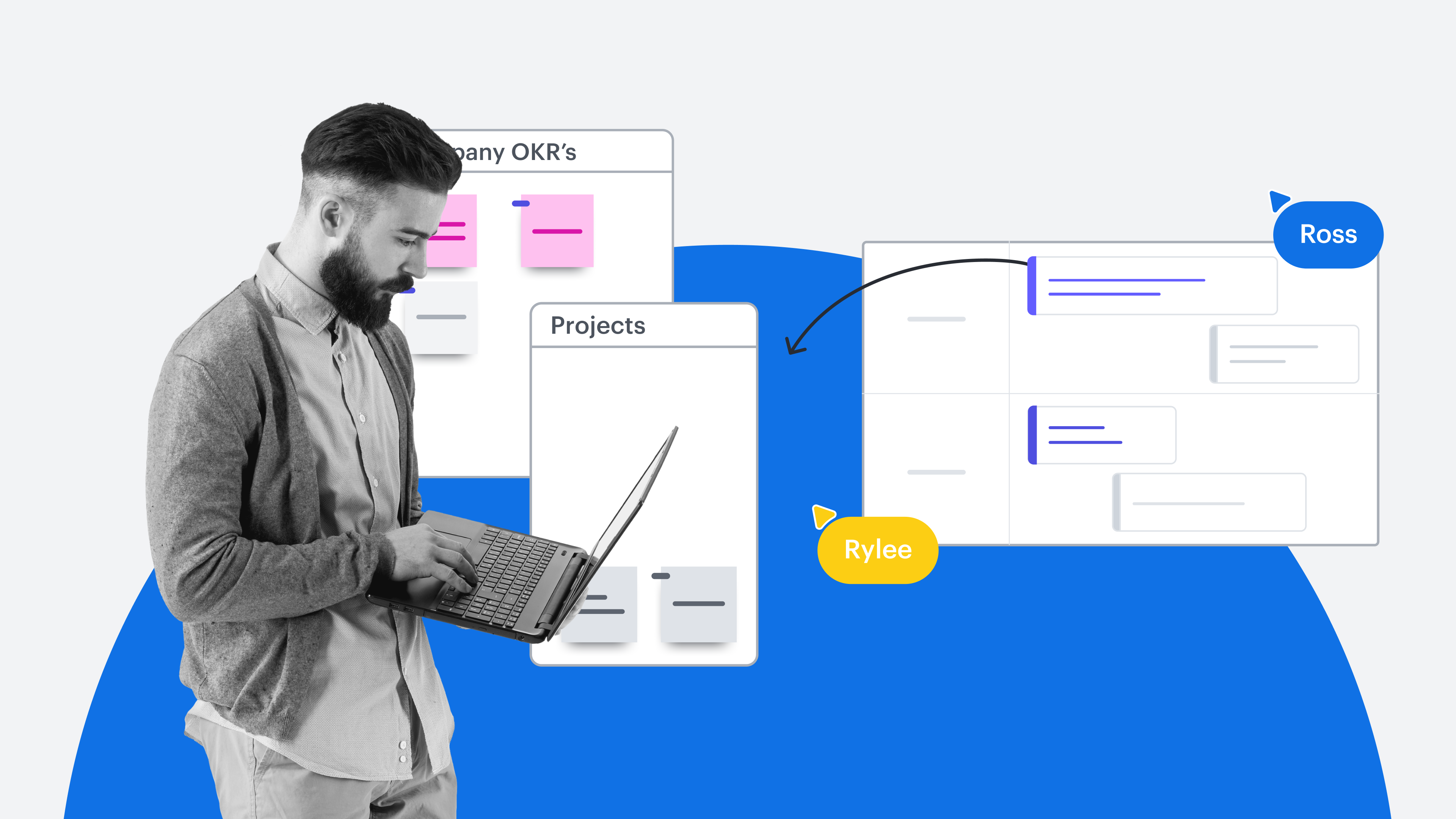
Big room planning guide (+ an Agile template toolkit)
Reading time: about 13 min
In today’s agile organizations, leadership teams host an event where every team member can offer insight, provide clarity, and actively design plans, product development initiatives, and more.
This collaborative, time-boxed planning event is known as big room planning. Hosting a big room planning event is extra challenging in today’s working environment because so much of our workforce is hybrid or remote. With that, it can be difficult to keep people engaged and to make collective decisions.
In this guide, we’ll walk you through how to host a big room planning session that can accommodate hybrid or virtual teams, engage your teams, visualize decision-making processes to reach a consensus faster, and foster a collaborative environment that prioritizes input from every team member.

Want to dive in deeper?
Check out our course on big room planning setup and facilitation.
Get startedTable of contents
What is big room planning (or PI planning)?
Big room planning (sometimes referred to as BRP for short, product increment (PI) planning, or release planning) is an inclusive form of Agile planning that aligns the strategic product vision with the work the team does in upcoming iterations. It can take place in person or virtually, and it’s usually time-boxed over the course of one to three days.
During the event, an organization will bring together everyone involved, including agile teams, product and design people, architects, operations and other subject matter experts, sponsors, management, and more, to momentarily pause their initiatives and collaboratively craft high-level plans for upcoming work.
A big room planning session aims to get everyone in the same space, working together to create a shared understanding of upcoming goals and initiatives. While this technique is commonly employed in Agile and Scrum environments, it’s something all organizations can incorporate into their regular planning process.
Technical considerations
Before starting, you’ll want to consider how your technology will support the event you’re about to put together. Getting your backend processes straightened out ahead of time will make for a much smoother event experience for all participants.
There are three key tools you’ll want to invest in to streamline your event:
- Meeting software: Find your ideal virtual meeting software to include remote or hybrid individuals in the event (or host the entire event if you’re remote). Chat functionality is also critical to ensure everyone can efficiently provide input.
- Visual collaboration software: Whether you’re meeting in person or remotely, you need a visual collaboration platform. Visualizing the many components of big room planning can help individuals and teams be more productive, better comprehend the perspective of other teams, and more easily communicate with stakeholders. Facilitating the planning and creating the corresponding planning artifacts in a visual collaboration platform also ensures everything is documented—it’s much harder to accidentally erase a virtual whiteboard than a physical one. Digitalizing the process also grants everyone visibility and ready access, regardless of location.
- Task management software: Ensure you have a reliable task management platform to help you organize projects, assign roles, and set deadlines to make all the work you do during your event actionable. To increase functionality, use a visual collaboration platform that integrates with your chosen task management software to streamline the process further by going straight from planning to action.
In the toolkit below, we’ll provide templates for use within the Lucid Suite (a visual collaboration platform) for your convenience.
The complete toolkit for big room planning in Agile
You’re armed with knowledge and a vision; now you need the tools to execute.
As a general rule of thumb, you’ll want to begin prepping a month or two in advance. While more time is always better, giving yourself a runway of roughly two months should allow for time to plan, collaborate, organize, and delegate.
In this toolkit, you’ll find a collection of templates and tips to equip you with everything you need to get started.
Product vision
Having a product vision ready and visible before the event helps teams understand what they’re working towards, aiding in overall alignment. Creating a solid product vision before the event makes tradeoff decisions more straightforward, as well.
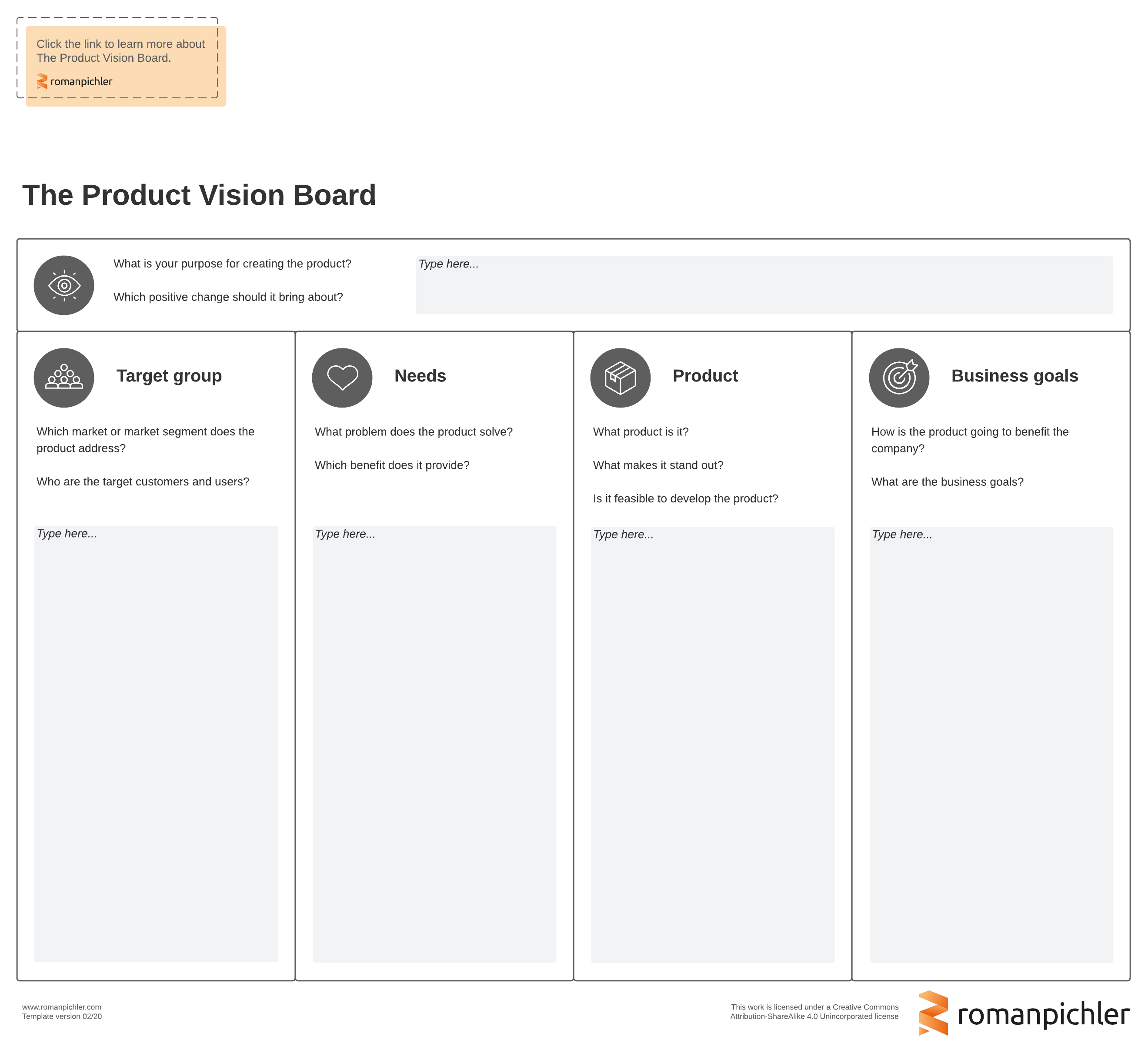
Product roadmap and goals
Setting product goals offers productive insight to your teams on the future state of what they’re building. Those goals should include details on the features and metrics you want to obtain in future product iterations.
Additionally, a product roadmap should clarify the product vision, put goals into action, and align teams on the work needed to release features successfully. The roadmapping stage is also the best time to understand the relationship between work tasks and proactively identify dependencies that need to be eliminated, mitigated, or managed.
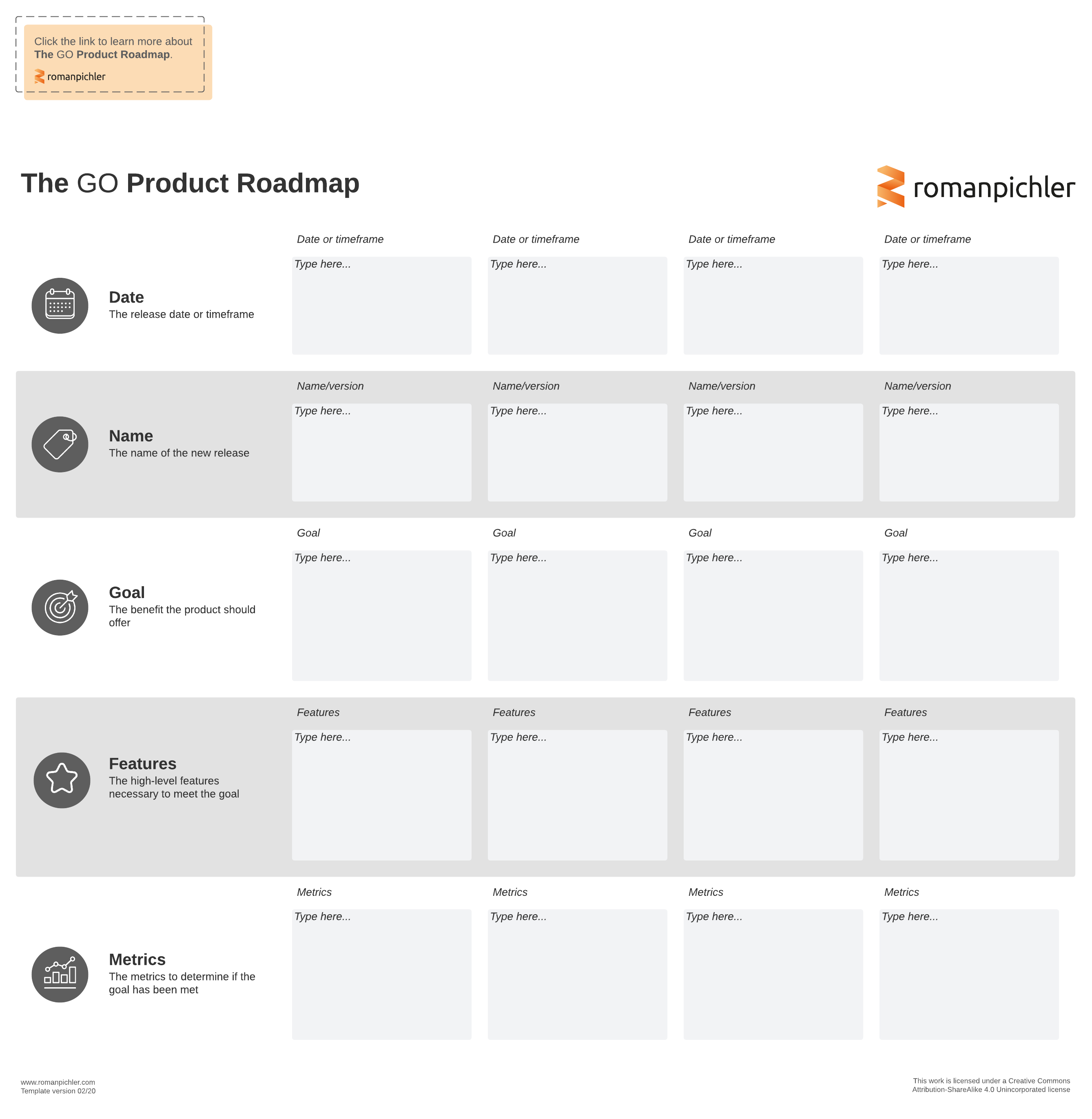
Trade-off matrix
In the scoping stages of a release (which will likely be a substantial time block of a big room planning event), a product trade-off matrix can help everyone visualize and align on critical success factors, prioritize constraints, and hold stakeholders accountable.
The trade-off matrix should help everyone understand up front: What is the critical aspect of the release?
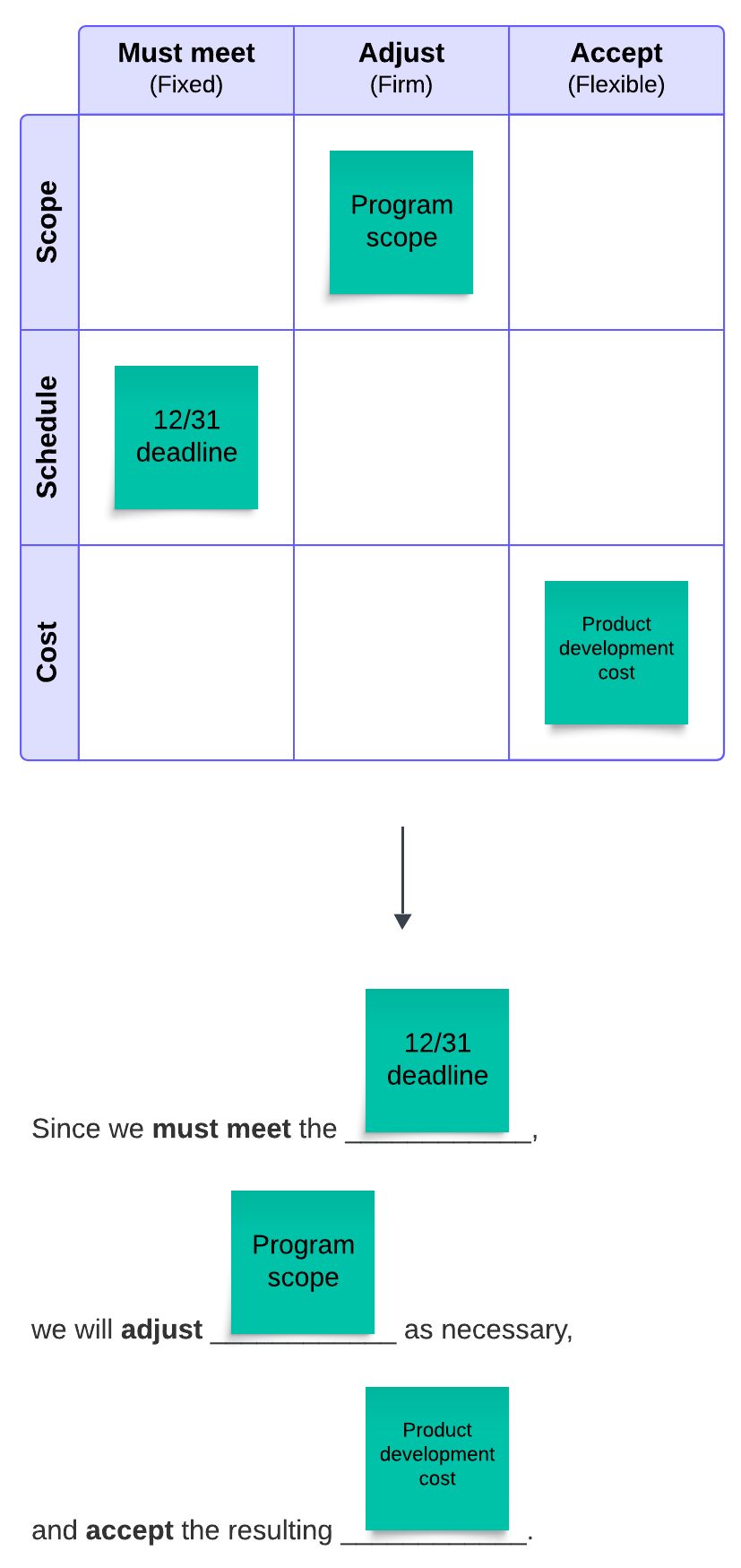
Product backlog
As teams employing Agile frameworks already know, a product backlog is the single authoritative source of things waiting to be developed by a team. With this Lucid template, you can visualize that backlog and keep it in a centralized location for persistent visibility.
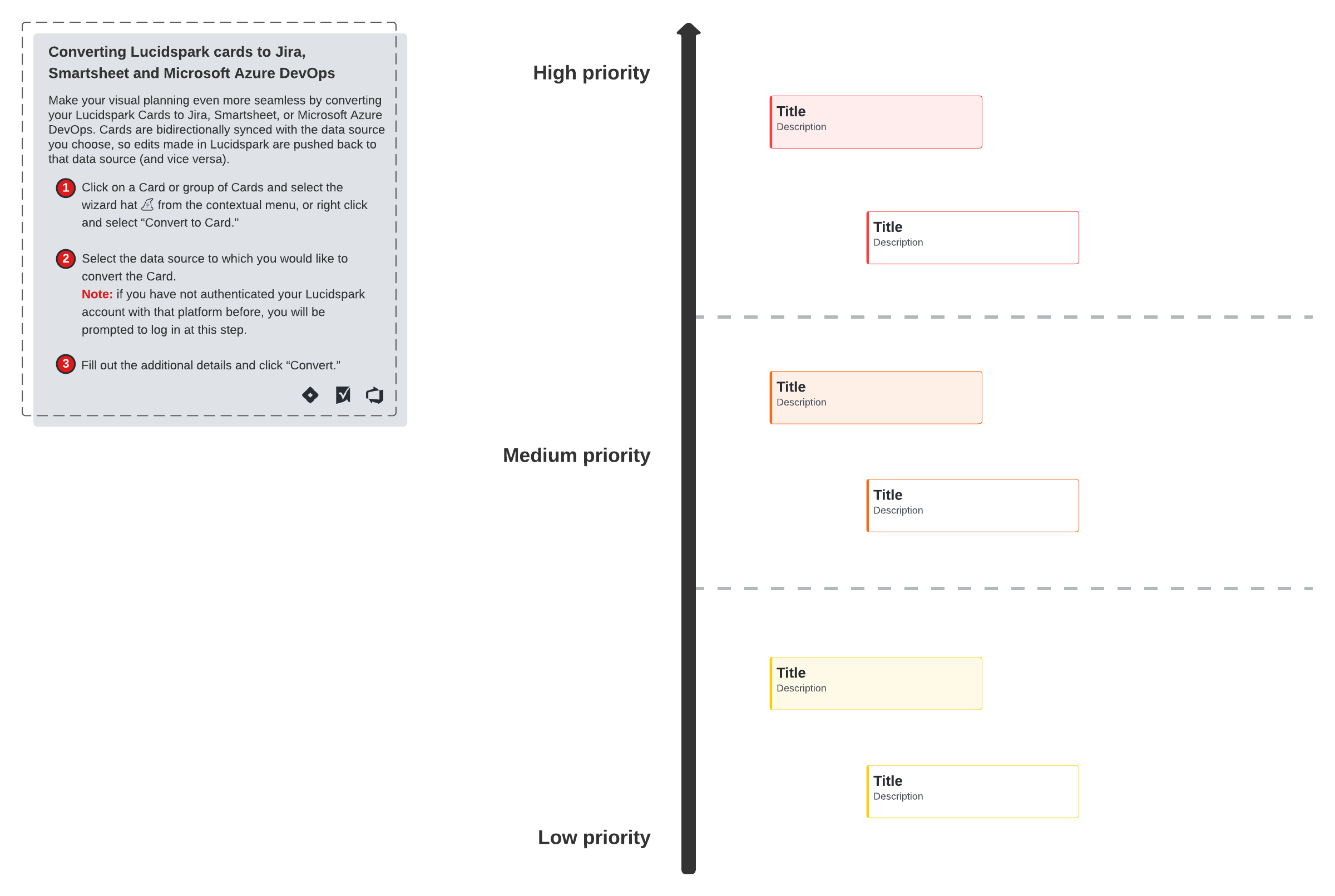
Agenda
What meeting is complete without an agenda? Certainly not one of this size, magnitude, and importance. An agenda sets the stage for collaboration. In the case of Agile big room planning, avoid making your agenda time-based and instead focus on high-level activities.
You’ll want to ensure that your document adequately establishes the meeting goals and purpose.
Consider establishing a working agreement and ground rules for the event within the big room planning agenda so they’re easily accessible and visible. Those ground rules should include the practices and procedures everyone agrees to follow to guide everyone toward successful collaboration.
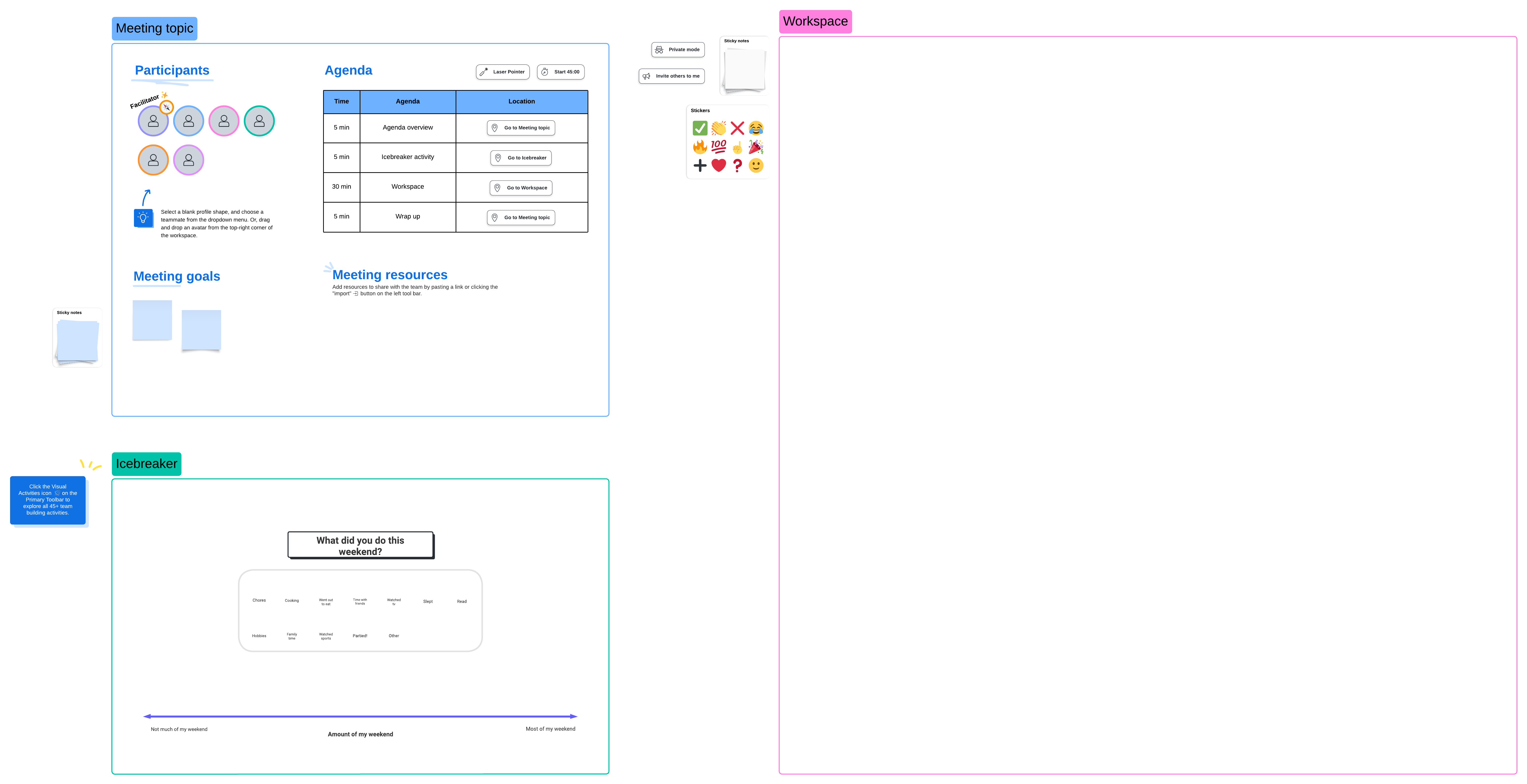
Team forecasts of velocity
A team forecast of velocity uses historical data to inform the team’s guess of how much they can accomplish in a future sprint. These insights guide decisions during big room planning.
When compiling these projections, ensure you’re being realistic, not optimistic. The goal of this empirical planning approach is to make the most educated decisions during the event.
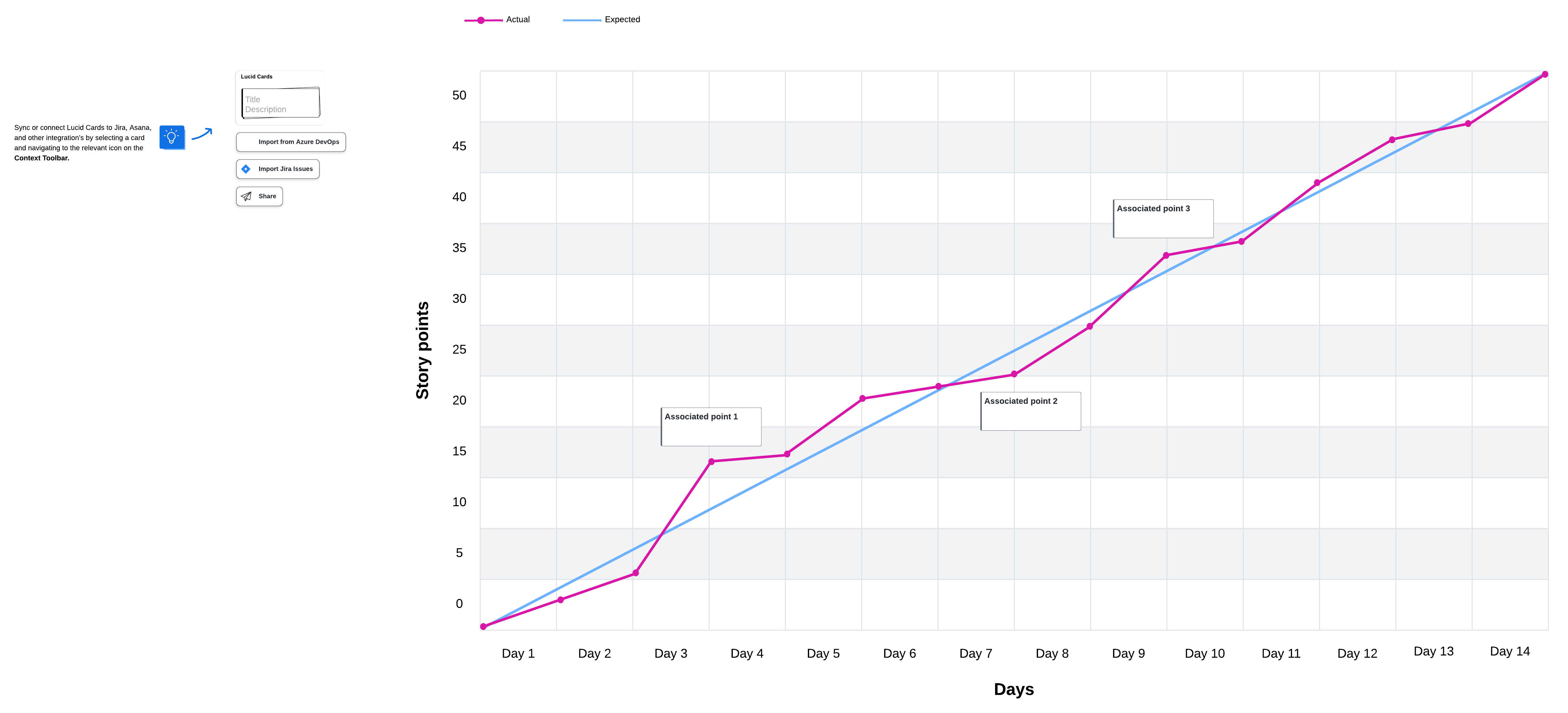
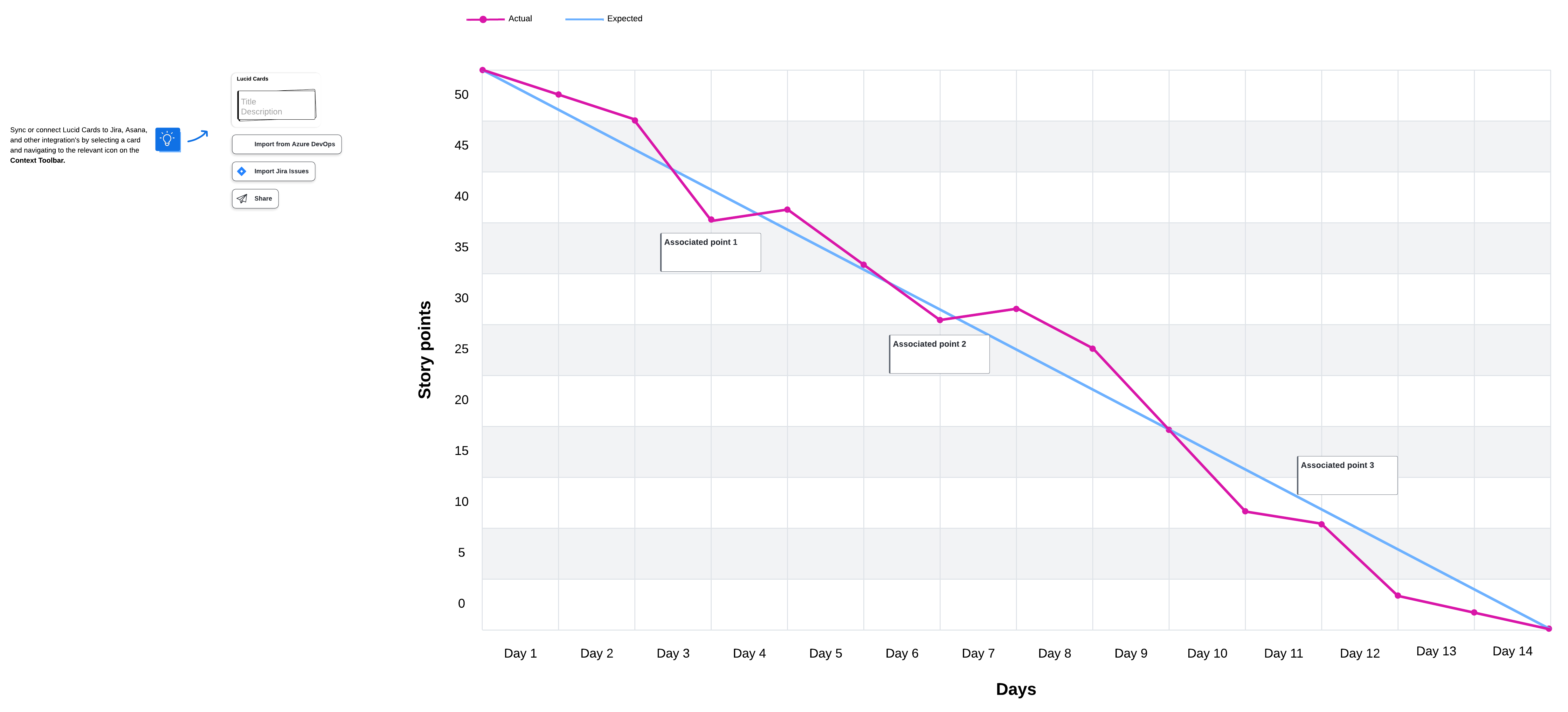
Another tool you can use in Lucid to forecast how much work your team can take on is team estimation, which helps you quickly estimate the level of effort associated with each task. Use estimation shape banks to get an overall sense of capacity and ensure you’re realistic with your projections for accomplishment.
Big room planning board
To pull it all together, you’ll want to provide a way for the participants to visualize everything involved in the big room planning event.
Start with our template and add your own elements. This template can also help with cross-functional communication so that teams can see everything the other team members are working on, which is one of the primary reasons for holding a big room planning event in the first place.
A virtual planning space is especially useful for giving your teams a constantly visible location to understand where they’re at in the process.


Want to learn more about visual collaboration platforms?
Check out our buyer’s guide for information on how to evaluate visual collaboration software and choose the right one for you.
Read more8 steps to facilitate big room planning
You have the background knowledge. You understand the challenges ahead. You have the tools needed to succeed. Now, it’s showtime.
The following eight steps cover everything from opening the big room meeting to maintaining the momentum.
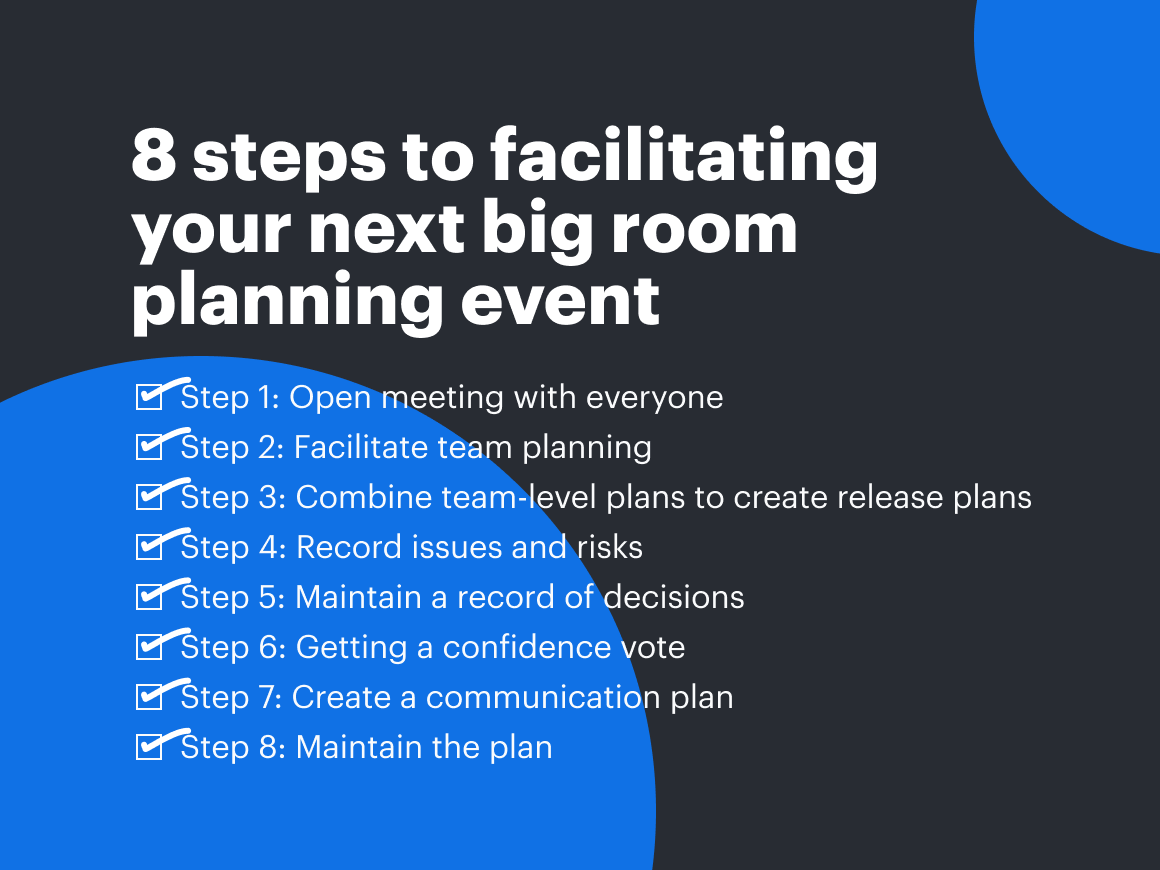
Step 1: Open the meeting with everyone
Opening a large meeting or event can feel like staring at a blank canvas. Throwing some paint down to get things rolling can feel like a huge hurdle.
To overcome this feeling, it’s helpful to start by reviewing the purpose of the meeting. Once all essential players are in one room, you can start by discussing why they’re all here. Are you planning for a specific release? Is this your yearly kickoff meeting?
Then, you will want to set meeting objectives with everyone. What are the goals? How do we know when we’ve reached them? Answering these questions up front creates substantial clarity for the group.
You can then review the rest of the agenda and schedule, set group working agreements for the event, and walk through any additional resources.

Step 2: Facilitate team planning
If your participants are co-located, physically divide into smaller teams and set up collaborative planning spaces. For remote teams especially, Lucid’s breakout boards are the perfect solution for this step. Using breakout boards keeps your teams in a central location and ensures they remain synced with the larger group but still provides a dedicated space for small group planning.
During team planning, teams should focus on the following action items:
- Identifying key dates: It's imperative to identify key dates that serve as milestones or deadlines for the work. These dates could include product release dates, client deliverables, or regulatory compliance deadlines. Having a timeline can help keep teams on track and increase visibility.
- Finalize backlog refinement: This involves structuring and arranging all features and user stories that comprise the workload.
- Ordering the backlog: This process involves determining the order in which tasks or user stories will be tackled.
- Make trade-off decisions: Here, the business and development teams collaborate to address challenge and impediments.
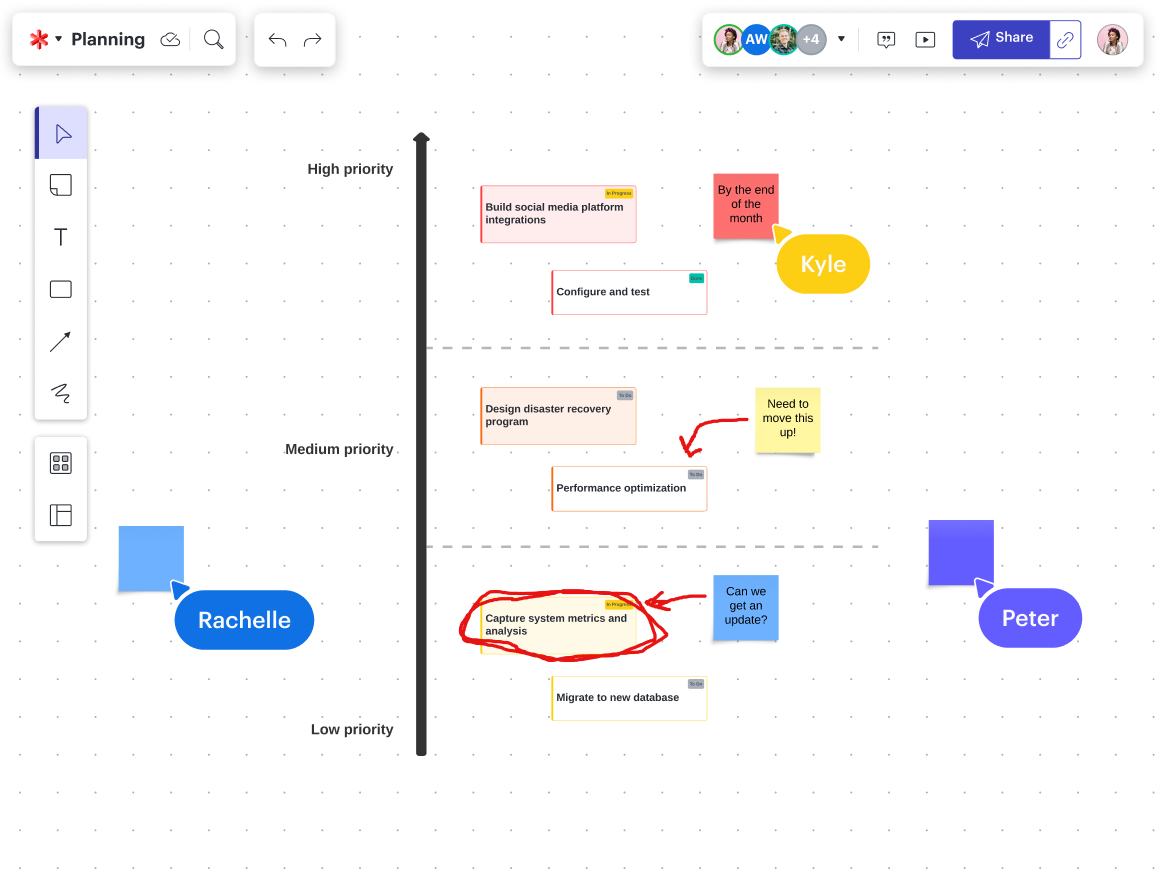
Step 3: Combine team-level plans to create release plans
Now you’ll want to jump into your master big room planning document because it’s time to bring your teams back together.
If you’re running your event in person, you may send out a broadcasted message or find another way to call teams back from their individual rooms. If your event is virtual (or has a hybrid component), that may involve calling them back from their breakout boards. At this point, you’ll spend a significant amount of time combining all the teams’ release plans with separate work streams from other teams.
This step is where big room planning begins to feel invaluable. Teams started by working independently and can now collaborate on a cross-functional scale, ensuring maximum alignment across your organization.
As you gather all of the team plans in one place against one timeline, you are creating a single source of truth for this event and beyond for teams to continually reference.
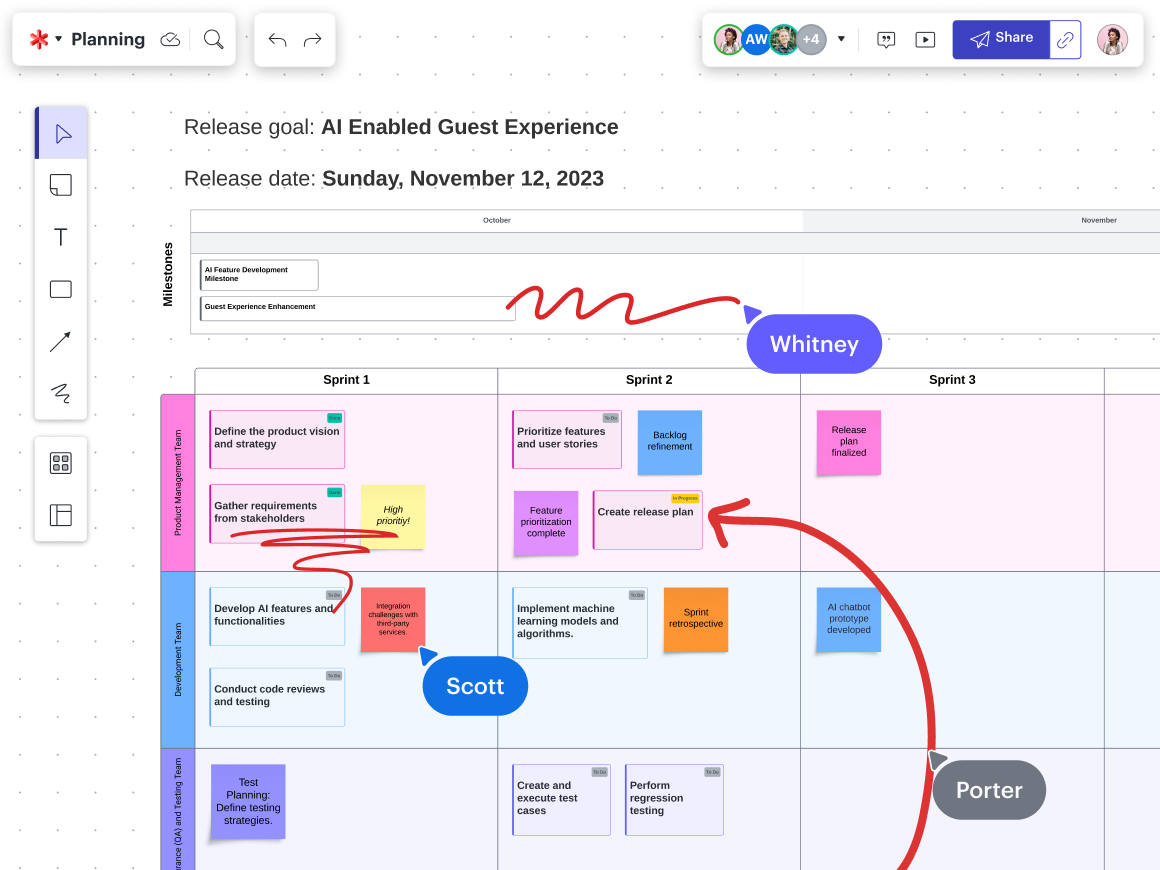
Step 4: Record issues and risks
Next, facilitate the creation of an action plan to address any issues that came up during the previous steps, such as dependencies, covering all high-risk areas. Using a visual collaboration platform for all of your teams’ planning sessions, brainstorms, and timelines makes this step much easier because the underlying details have already been recorded. You can even use Lucid to visualize dependencies across your organization to enhance alignment and transparency. Thanks to Lucid’s integrations, any changes you make in a Lucid board sync with Jira and Azure DevOps, so you don’t need to waste time on manual updates in your existing system of record.
All you need to do now is compile these items into an action plan. You’ll want to ensure there are clear owners and deadlines associated with each action item to provide the most clarity and structure.
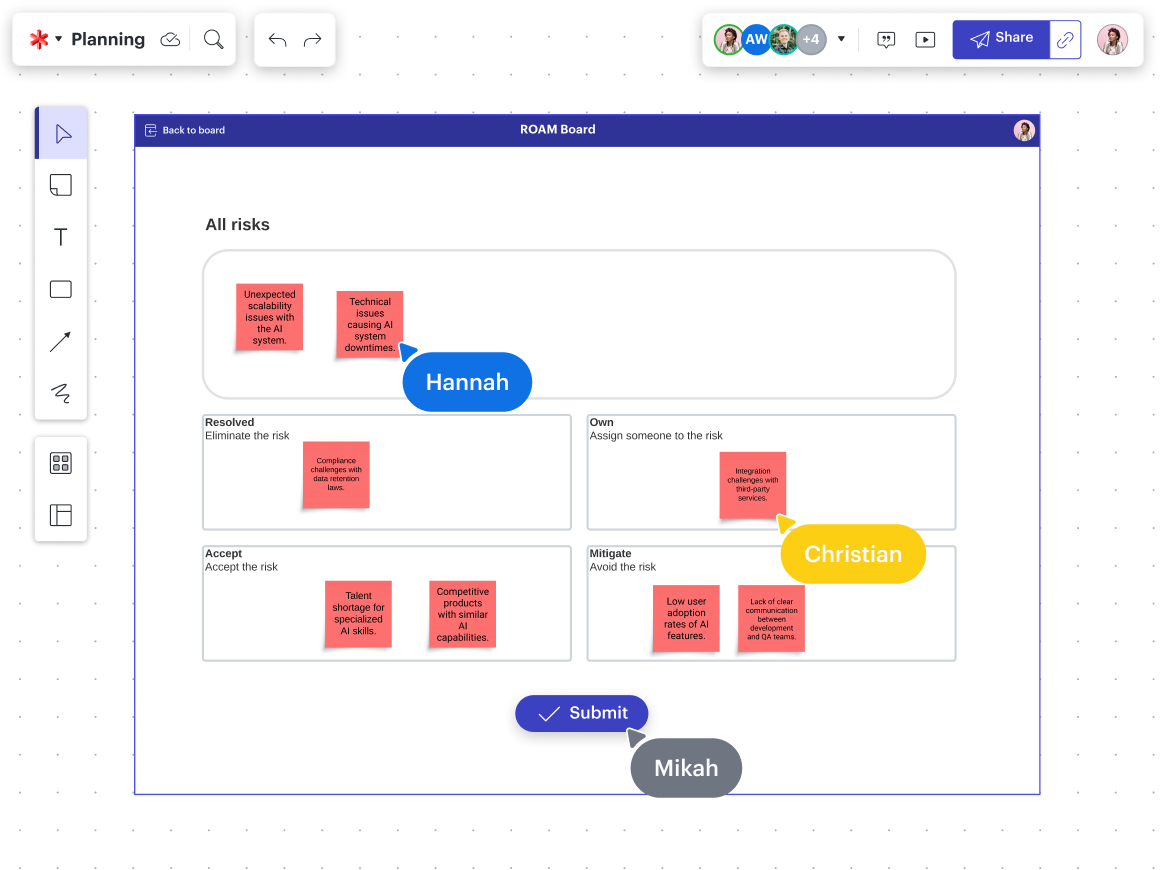
Step 5: Maintain a record of decisions
Maintaining a record of decisions is not just good practice—it's an essential part of the process. This is where the power of a visual collaboration platform can truly shine. If you were relying on paper sticky notes and physical whiteboards for this process, it becomes all too easy to lose crucial context surrounding pivotal choices.
Keeping a record of the decisions made throughout the process in a visual collaboration platform provides vital context and, over time, creates a living blueprint of your organization. Keeping a record means teams can go back and reference those documents at any time to understand the origin of ideas, the reasoning for prioritization, and other valuable insights. It also holds individuals accountable for their work, which can lead to team members being accurately recognized for their ideas. Use the Lucid big room planning template to help you maintain a record of decisions.
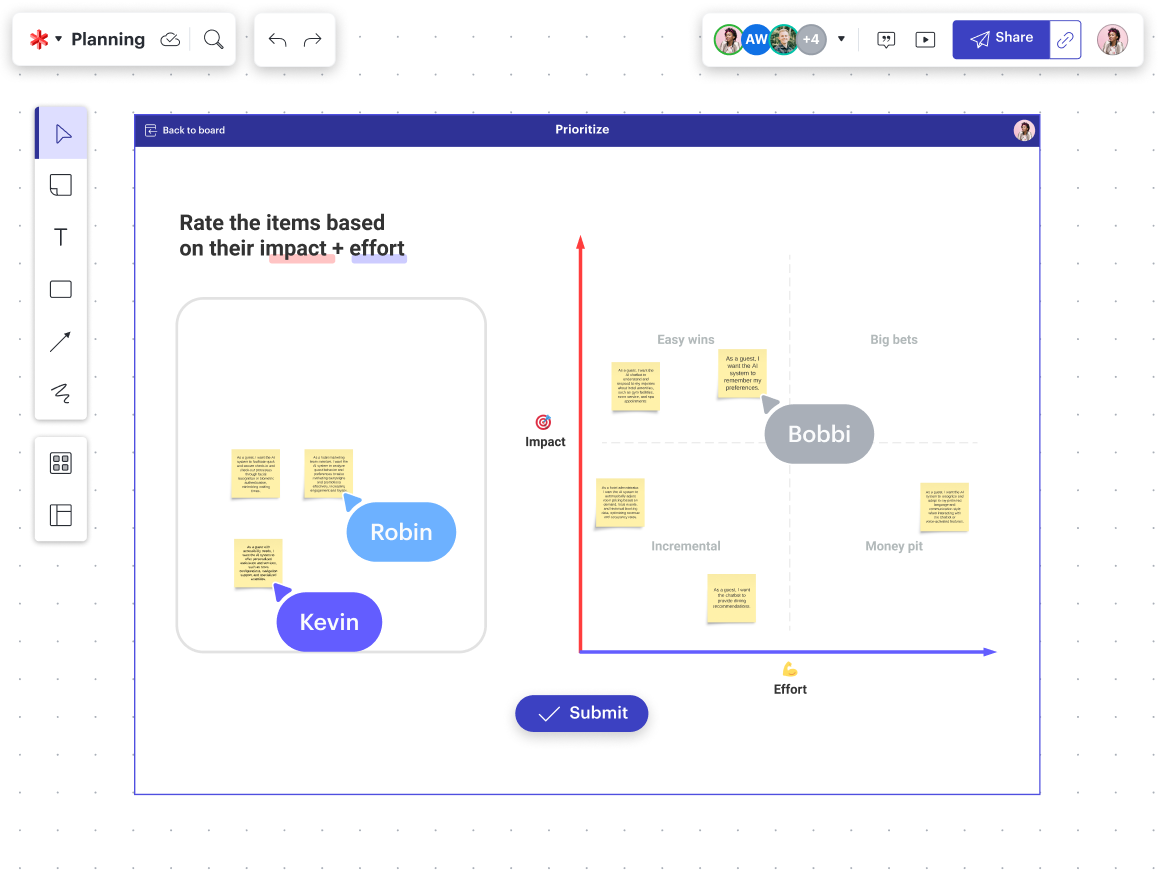
Whether through digital document repositories, structured meeting minutes, or dedicated decision logs, the key is to capture the essence of decisions in a format that promotes clarity and accountability.

The ultimate strategic decision-making guide
Lucid’s guide to decision-making is full of valuable insights to help you make group decisions and document them effectively.
Check it outStep 6: Getting a confidence vote
As we near the final stretch, you’ll want to get a confidence vote from the teams. Gauging buy-in can be a challenging part of any meeting, especially one of this size. Skipping this step isn’t an option, though, because without the confidence of team members in the plans, there could be too little momentum following the event.
Enter: Visual Activities.
Lucid’s Visual Activities, including the confidence vote activity and fist to five activity, provide the ideal opportunity to engage all team members and gather a confidence vote on the plans. No matter your format (in-person, hybrid, or virtual), you can use this tool to facilitate agreement or bring a divergent discussion to a conclusion.
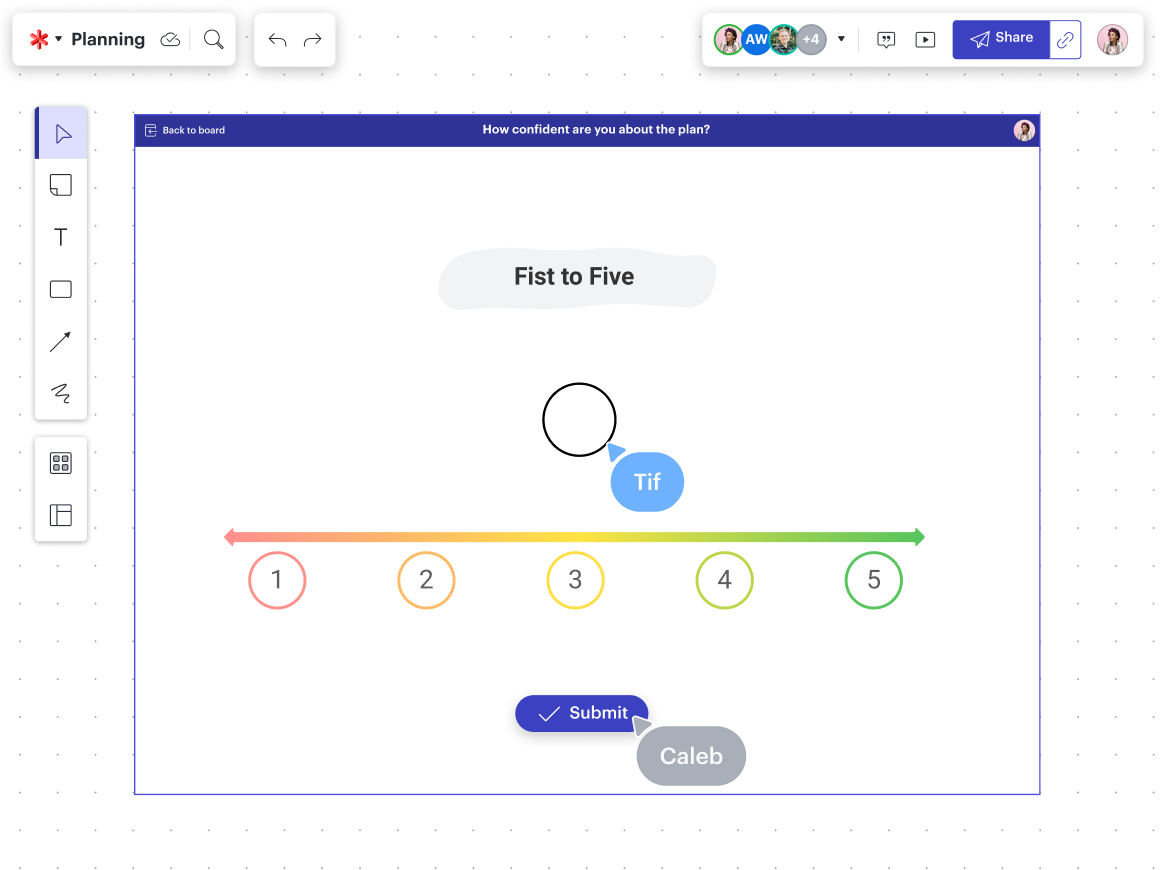
Step 7: Create a communication plan
It’s not realistic to expect every single team member to be available for the big room planning event. Someone will inevitably be out of office, sick, or otherwise unable to attend. Others outside the scope of the planning event will also need to be informed. For these reasons, you need a communication plan.
This doesn’t have to be a complicated step. All this plan needs to include is an outline of what information needs to be shared with those who weren’t present and how it will be shared. Keeping everyone in the loop maintains a culture of transparency and alignment.
Step 8: Maintain the plan
Ah, we’ve reached the finish line! As your efforts conclude, it’s important to remember that maintaining the plan you’ve built during this event is vital to its success. Because you’ve created a visual document throughout your big room planning event, centralizing all documentation (including brainstorms, team and group planning sessions, design documents, processes, and more), you have a place to keep everyone informed.
To maintain the plan, make sure everyone has access to the document after the conclusion of the event. Inform them that this plan will be updated over time as different elements change and evolve.
In addition, you should use visual metrics, like a release burnup chart, to track project progress, prioritize transparency, and help the team adapt as needed.
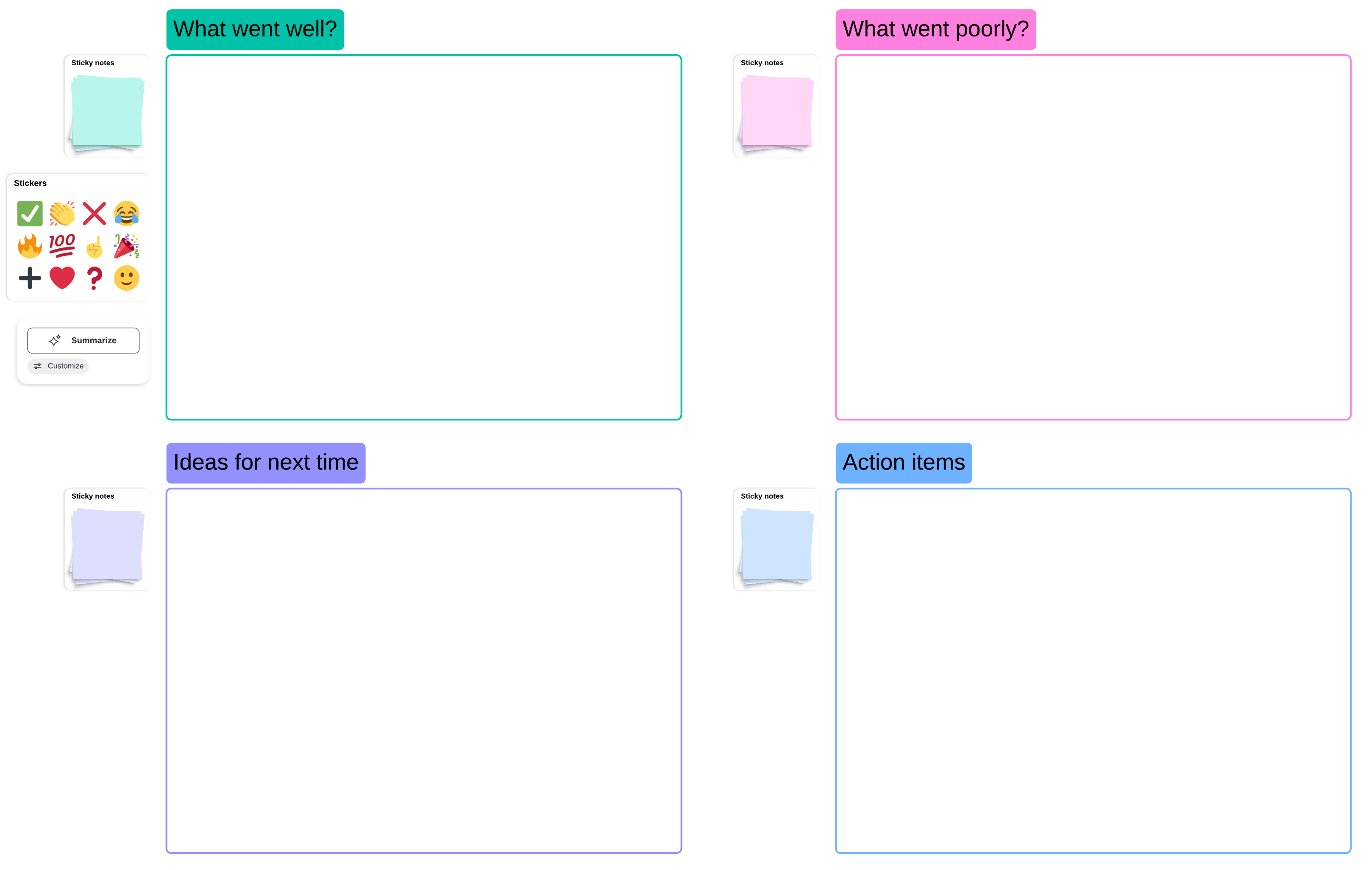
How Lucid helps with big room planning
Big room planning is a dynamic process. As we've discussed in this guide, visualizing this process can make a world of difference, whether your team is gathering in person or working remotely.
With Lucid's robust capabilities, your big room planning event becomes more than a planning session—transforming into a seamless and visually engaging experience.
Here's how Lucid can shape the way your teams plan and collaborate:
- Visualization: Lucid provides a visual canvas where teams can work together, no matter their location. The power of visualization becomes your ally as you organize backlog items, identify dependencies, create sprint boundaries, and make crucial decisions with the click of a button.
- Remote capabilities: In an era where remote work is more prevalent than ever, Lucid ensures that physical distances don’t get in the way of effective planning. For remote teams, Lucid's digital tools enable the same level of engagement, making it feel like everyone is in the same room.
- Centralized and secure documentation: Lucid centralizes your documentation, eliminating the need for paper-based records that can easily be lost or damaged. Your critical information is securely stored, ensuring it remains accessible when you need it most.
Lucid is your ultimate partner in hosting a more streamlined, efficient, and visually engaging planning process that sets the stage for success.

Host your next big room planning event with confidence
Ready to find out how Lucid can help you organize your big room planning event? Request a demo and try us out for yourself.
Request a demoAbout Lucid
Lucid Software is a pioneer and leader in visual collaboration dedicated to helping teams build the future. With its products—Lucidchart, Lucidspark, and Lucidscale—teams are supported from ideation to execution and are empowered to align around a shared vision, clarify complexity, and collaborate visually, no matter where they are. Lucid is proud to serve top businesses around the world, including customers such as Google, GE, and NBC Universal, and 99% of the Fortune 500. Lucid partners with industry leaders, including Google, Atlassian, and Microsoft. Since its founding, Lucid has received numerous awards for its products, business, and workplace culture. For more information, visit lucid.co.
Related articles
5 ways visuals drive better decisions to build better products
Serious about building the future? Then ditch outdated communication methods and use visuals to drive innovation.
A step-by-step guide to business process improvement
How do you go beyond the methodologies and create real change? It’s time to learn the process of process improvement.
What makes Lucid the most intelligent visual collaboration platform—and why does it matter?
From data-backed visualizations to automation and AI, find out what makes Lucid the most intelligent visual collaboration platform.
A facilitator’s guide to meeting equity
Conducting an equitable meeting requires preparation. Learn more about how to facilitate meeting equity in this article.
